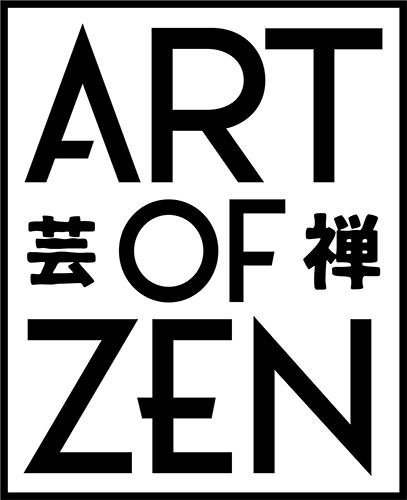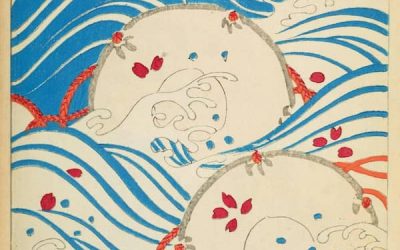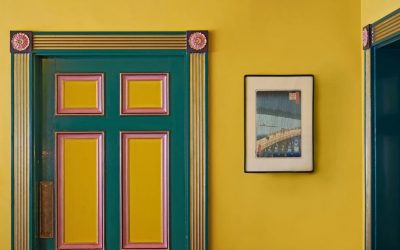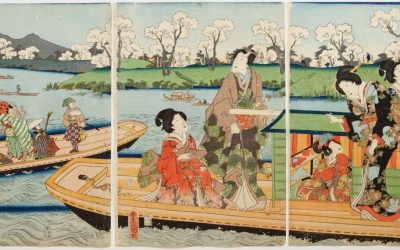What is the meaning and artistry of the wave motif in Japanese art? From seigaiha patterns to Hokusai’s Great Wave—a timeless symbol of motion, impermanence, and beauty.
Hiroshige
The Art of the Edo Period: A Floating World in Full Color
Step into the vibrant world of Edo-period art, where ukiyo-e rose from street culture to become Japan’s most iconic global visual tradition.
The 5 Most Known Ukiyo-e Artists of the Edo Period
Meet the five most known ukiyo-e artists of the Edo period—Utamaro, Sharaku, Hokusai, Kuniyoshi, and Hiroshige—and how they shaped Japan’s floating world.
The Ultimate Guide to Hiroshige’s Sudden Shower Over Shin-Ohashi Bridge and Atake
Step into Hiroshige’s rainy Edo with “Sudden Shower Over Shin-Ohashi Bridge and Atake”—explore its print variations, auction history, and timeless beauty.
How Prussian Blue Changed the Face of Ukiyo-e
See how Prussian blue transformed Japanese ukiyo-e, reshaping Hokusai’s waves, Hiroshige’s rains, and the global art landscape forever.
Hokusai Was Not One Artist, But Many: A Life in Ukiyo-e Transformation
Follow the many lives of ukiyo-e master Hokusai, from Shunrō to Manji, as his art transforms through names and evolving styles.
Why TASCHEN’s Hokusai is the Ultimate Gift for Fans of Ukiyo-e
Discover TASCHEN’s Hokusai book by Andreas Marks—746 artworks, deep insights, and pure Japanese art mastery in one epic volume.
Why Mono no Aware Is the Soul of Japanese Ukiyo-e
How mono no aware, the bittersweet awareness of life’s impermanence, flows through Japanese art and ukiyo-e.
What You Should Know About Uchiwa-e: Japanese Fan Art
Explore the history, craftsmanship, and cultural significance in the artistry of Japanese fan prints, called uchiwa-e.









